Calculation of External Vehicle Aerodynamic Noise Based on LES Subgrid Model
Abstract
:1. Introduction
2. Computational Theory
2.1. LES
2.2. SLM Subgrid Model
2.3. Dynamic SLM Ssubgrid Mmodel
2.4. Acoustic Analogy Method Based on the Ffowcs Williams-Hawkings Equation
3. The Experimental Introduction
3.1. Surface Pressure Measuring
3.2. Surface Noise Intensity Measuring
4. Numerical Simulation
4.1. Simulation Model
4.2. Mesh
4.3. Boundary Condition
4.4. Transient Solution Settings
5. Simulation Results and Analysis
5.1. Simulation Results of Flow Field
5.2. Analysis of the Sound Field
5.3. Analysis of Simulation Results
6. Conclusions
Author Contributions
Funding
Acknowledgments
Conflicts of Interest
References
- Yang, Z.D.; Gu, Z.Q.; Xie, C.; Zong, Y.Q.; Jiang, C.M. Experimental research on noise reduction mechanism of a groove spoiler in vehicle sunroof. J. Hunan Univ. (Nat. Sci.) 2018, 45, 26–34. [Google Scholar]
- Robert Powell, Sivapalan Senthooran and Philippe Moron. A Computational Process to Effectively Design Seals for Improved Wind Noise Performance; SAE Paper, 2019-01-1472; SAE: Warrendale, PA, USA, 2019. [Google Scholar]
- Hu, X. Automotive Aerodynamics; China Communications Publishing: Beijing, China, 2014. [Google Scholar]
- Gu, Z. Automotive Aerodynamics; China Communications Publishing: Beijing, China, 2005. [Google Scholar]
- Tadakuma, K.; Sugiyama, T.; Maeda, K. Development of Full-Scale Wind Tunnel for Enhancement of Vehicle Aerodynamic and Aero-Acoustic Performance; SAE Paper, 2014-01-0598; SAE: Warrendale, PA, USA, 2014. [Google Scholar]
- Terakado, S.; Makihara, T.; Sugiyama, T.; Maeda, K.; Tadakuma, K.; Tsuboi, K. Experimental Investigation of Aeroacoustic Cabin Noise in Unsteady Flow by Means of a New Turbulence Generating Device; SAE Paper, 2017-01-1545; SAE: Warrendale, PA, USA, 2017. [Google Scholar]
- Iacovoni, D.P.; Zeuty, E.J.; Morello, D.A. Wind Noise and Drag Optimization Test Method; SAE Paper, 2003-01-1702; SAE: Warrendale, PA, USA, 2003. [Google Scholar]
- Khalighi, B.; Johnson, J.P.; Chen, K.; Lee, R.G. Experimental Characterization of the Unsteady Flow Field behind Two Outside Rear View Mirrors; SAE Paper, 2008-01-0476; SAE: Warrendale, PA, USA, 2008. [Google Scholar]
- Yang, B. Research on Automobile Exterior Aerodynamic Noise [D]; Jilin University: Changchun, China, 2008. [Google Scholar]
- Li, W.; Liu, N.; Wang, Y.; Guo, H. Contribution Analysis of Noise on Driver’s Ear Side of High Speed Vehicles. Noise Vib. Control 2019, 1, 24–28. [Google Scholar]
- Itoh, A.; Wang, Z. The Mechanism of Hissing Noise in the Automotive Cabin and Countermeasures for Its Reduction; SAE Paper, 2019-01-1474; SAE: Warrendale, PA, USA, 2019. [Google Scholar]
- Yang, J.; Zhang, S.; Dong, G.; Jiang, H. Research on Frequency Characteristics of Automobile Interior Wind Noise in Wind Tunnel Test. Chin. J. Automot. Eng. 2019, 6, 445–451. [Google Scholar]
- Sovani, S.D.; Chen, K.-H. Aero Acoustics of an Automotive A-Pillar Raingutter: A Numerical Study with the Ffowcs-Williams Hawkings Method; SAE Paper, 2005-01-2492; SAE: Warrendale, PA, USA, 2005. [Google Scholar]
- Islam, M.; Decker, F.; de Villiers, E.; Jackson, A.; Gines, J. Application of Detached–Eddy Simulation for Automotive Aerodynamics Development; SAE Paper, 2009-01-0333; SAE: Warrendale, PA, USA, 2009. [Google Scholar]
- Krajnovic, S. Exploration and Improvement of Road Vehicle Aerodynamics Using LES; SAE Paper, 2011-01-0176; SAE: Warrendale, PA, USA, 2011. [Google Scholar]
- Li, Q.; Du, W.; Wang, Y.; Yang, Z. Aerodynamic Noise Control of Automobile Rear View Mirror Based on Active Jet. J. Tongji Univ. (Nat. Sci.) 2019, 8, 1195–1200. [Google Scholar]
- Jiang, H.; Lai, W.; Zhang, S.; Dong, G.; Jia, W.; Pang, J. Research on Aeroacoustic Optimization of Vehicle Rearview Mirror. Automot. Eng. 2020, 42, 121–126. [Google Scholar]
- Yang, B.; Hu, X.J.; Zhang, Y.C. Study on unsteady flow field and aerodynamic noise of automotive rear view mirror region. J. Mech. Eng. 2010, 46, 151–155. [Google Scholar] [CrossRef]
- Wang, J.; Chen, R.; Yang, J.; Gong, X.; Li, L. Simulation and Experimental Study on Aerodynamic Noise of Automotive Pear-view Mirror. Automot. Eng. 2018, 40, 1480–1486. [Google Scholar]
- Xiao, H.L.; Luo, J.S. Improvement of sub-grid model in large eddy simulation and applications in turbulent channel flow. J. Aerosp. Power 2007, 22, 583–587. [Google Scholar]
- Khalighi, B.; Chen, K.H.; Johnson, J.P.; Snegirev, A.; Shinder, J.; Lupuleac, S. Computational and experimental investigation of the unsteady flow structures around automotive outside rear-view mirrors. Int. J. Automot. Technol. 2013, 14, 143–150. [Google Scholar] [CrossRef]
- Piscaglia, F.; Montorfano, A.; Onorati, A. Towards the LES simulation of IC engines with parallel topologically changing meshes. J. Biol. Chem. 2013, 6, 926–940. [Google Scholar] [CrossRef]
- Serre, E.; Minguez, M.; Pasquetti, R.; Minguez, M.; Deng, G.B. On simulating the turbulent flow around the Ahmed body: A French–German collaborative evaluation of LES and DES. Comput. Fluids 2013, 78, 10–23. [Google Scholar] [CrossRef]
- Biswas, K.; Gadekar, G.; Chalipat, S. Development and Prediction of Vehicle Drag Coefficient Using OpenFoam CFD Tool; SAE Paper, 2019-26-0235; SAE: Warrendale, PA, USA, 2019. [Google Scholar]
- Wang, F.J. Computational Fluid Dynamics Analysis, 3rd ed.; Tsinghua University Press: Beijing, China, 2004. [Google Scholar]
- Lilly, D.K. A proposed modification of the germano subgrid-scale closure model. Phys. Fluids 1992, 4, 633–635. [Google Scholar] [CrossRef]
- Germano, M.; Piomelli, U.; Moin, P.; Cabot, W.H. Dynamic Subgrid-Scale Eddy Viscosity Model. In Summer Workshop; Center for Turbulence Research: Stanford, CA, USA, 1996. [Google Scholar]

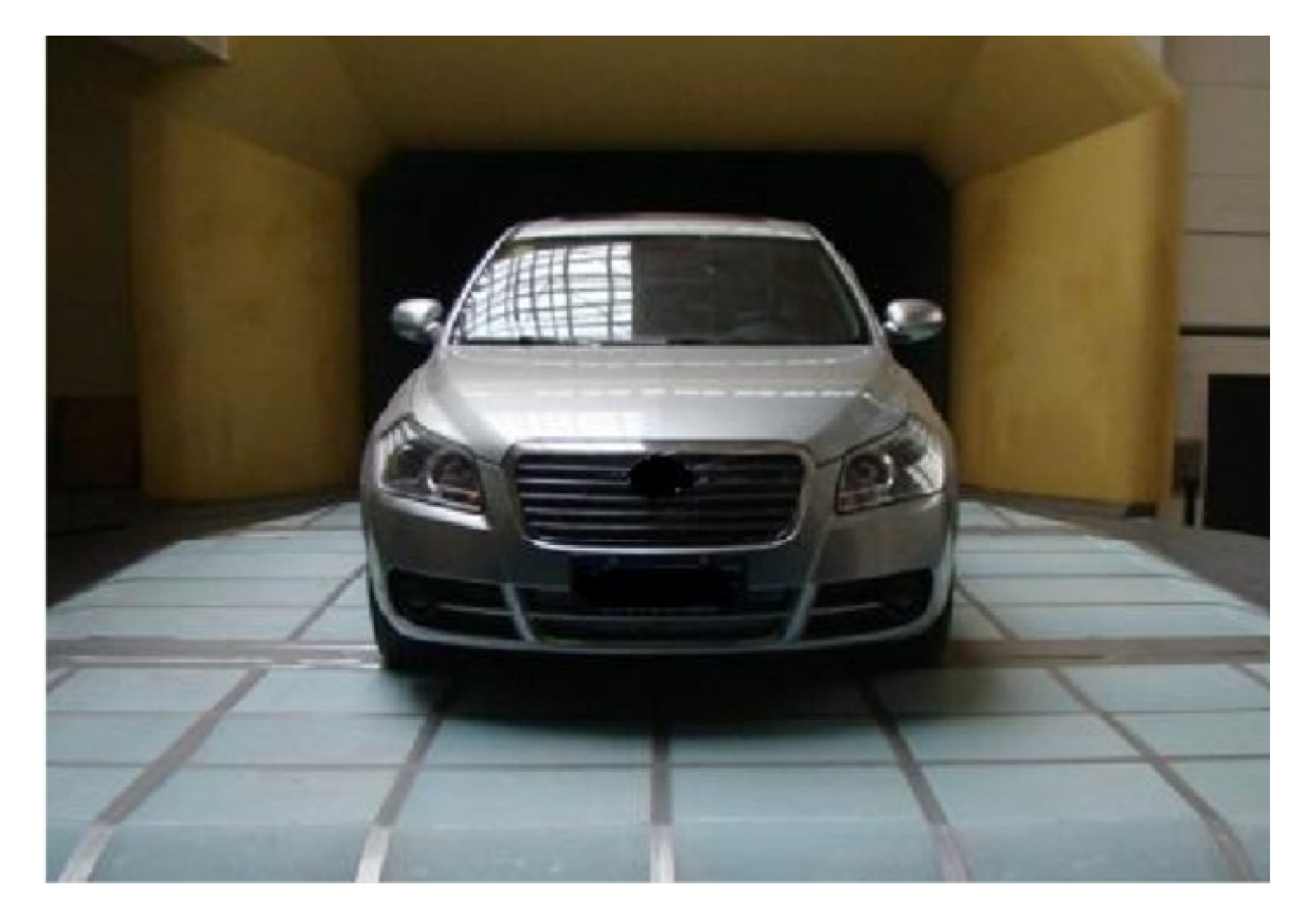

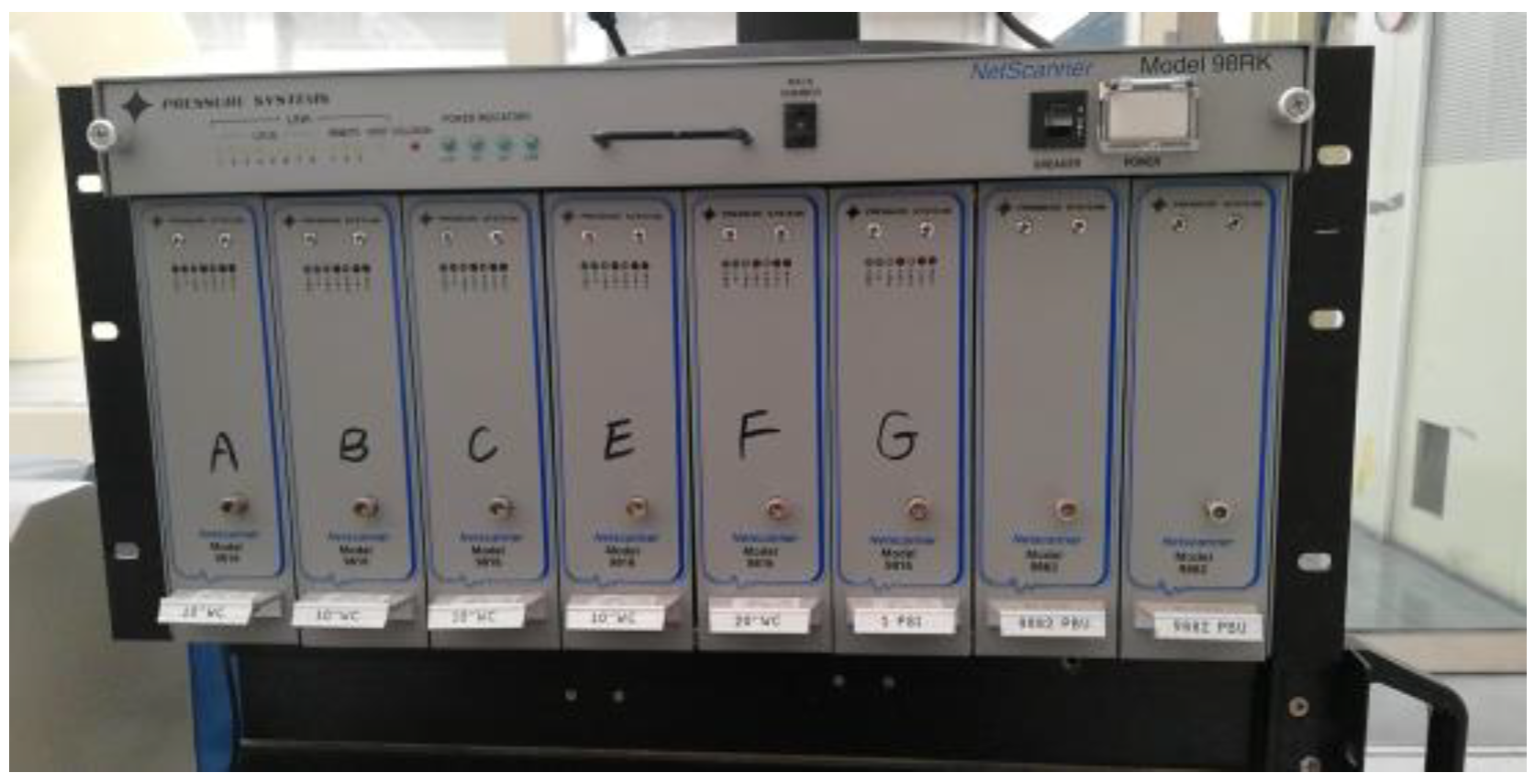

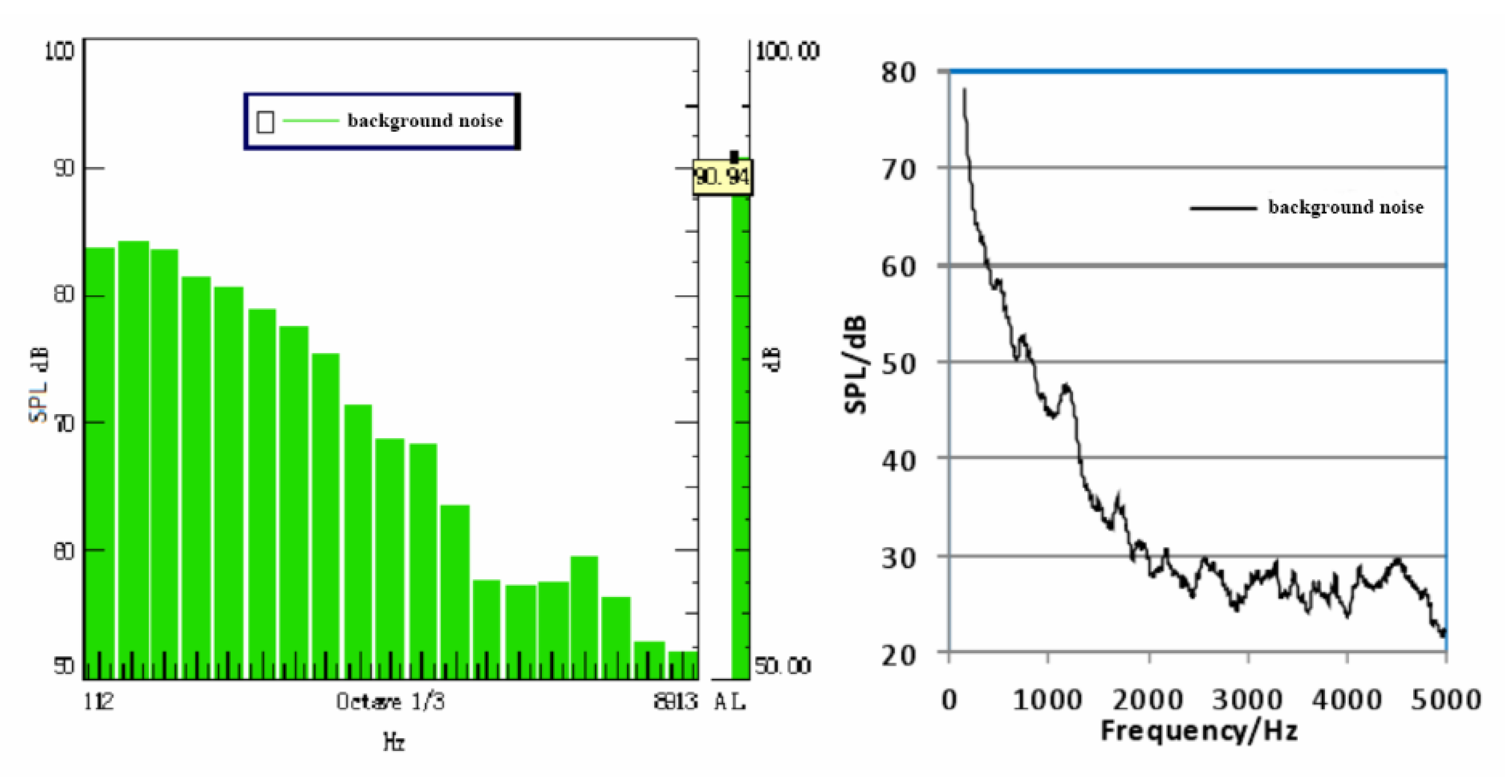

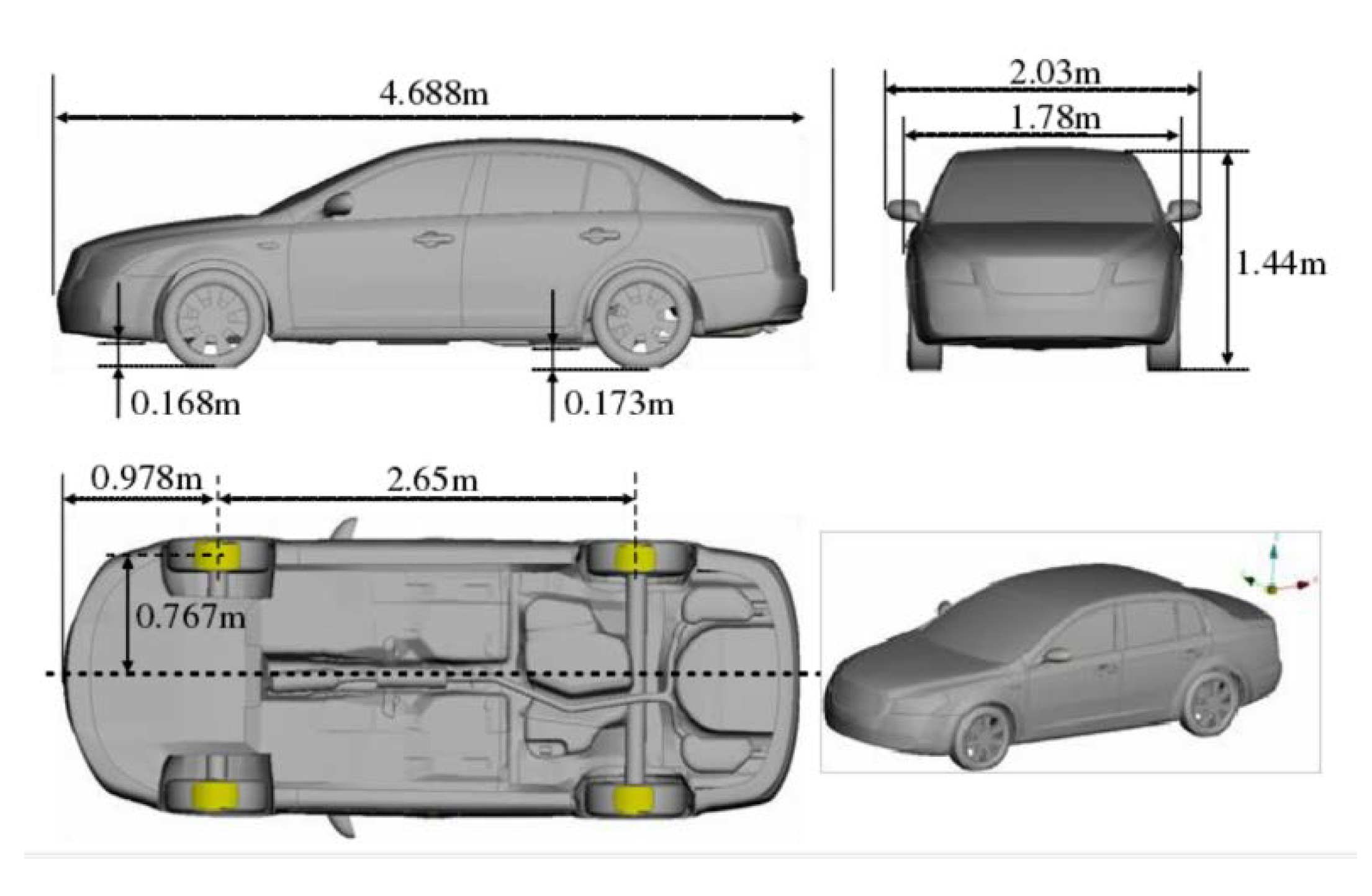


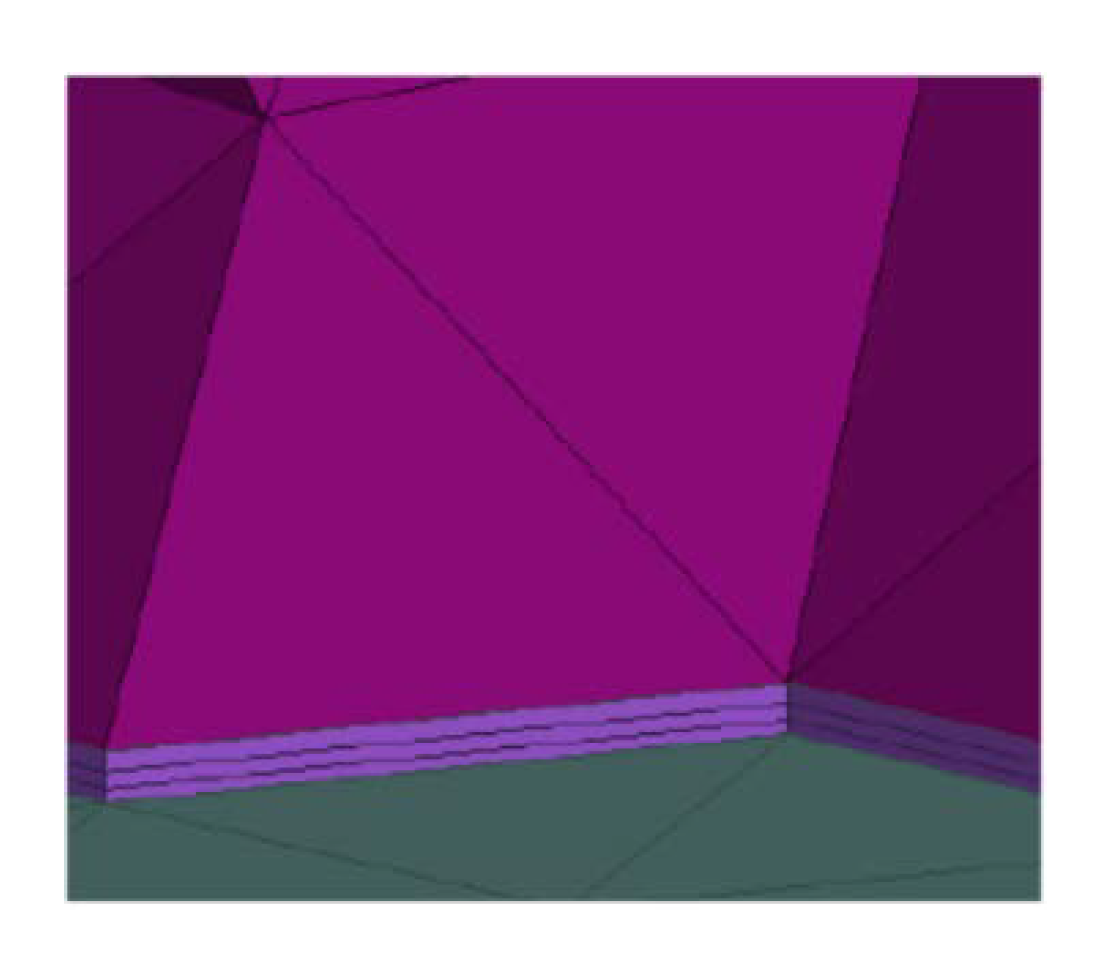
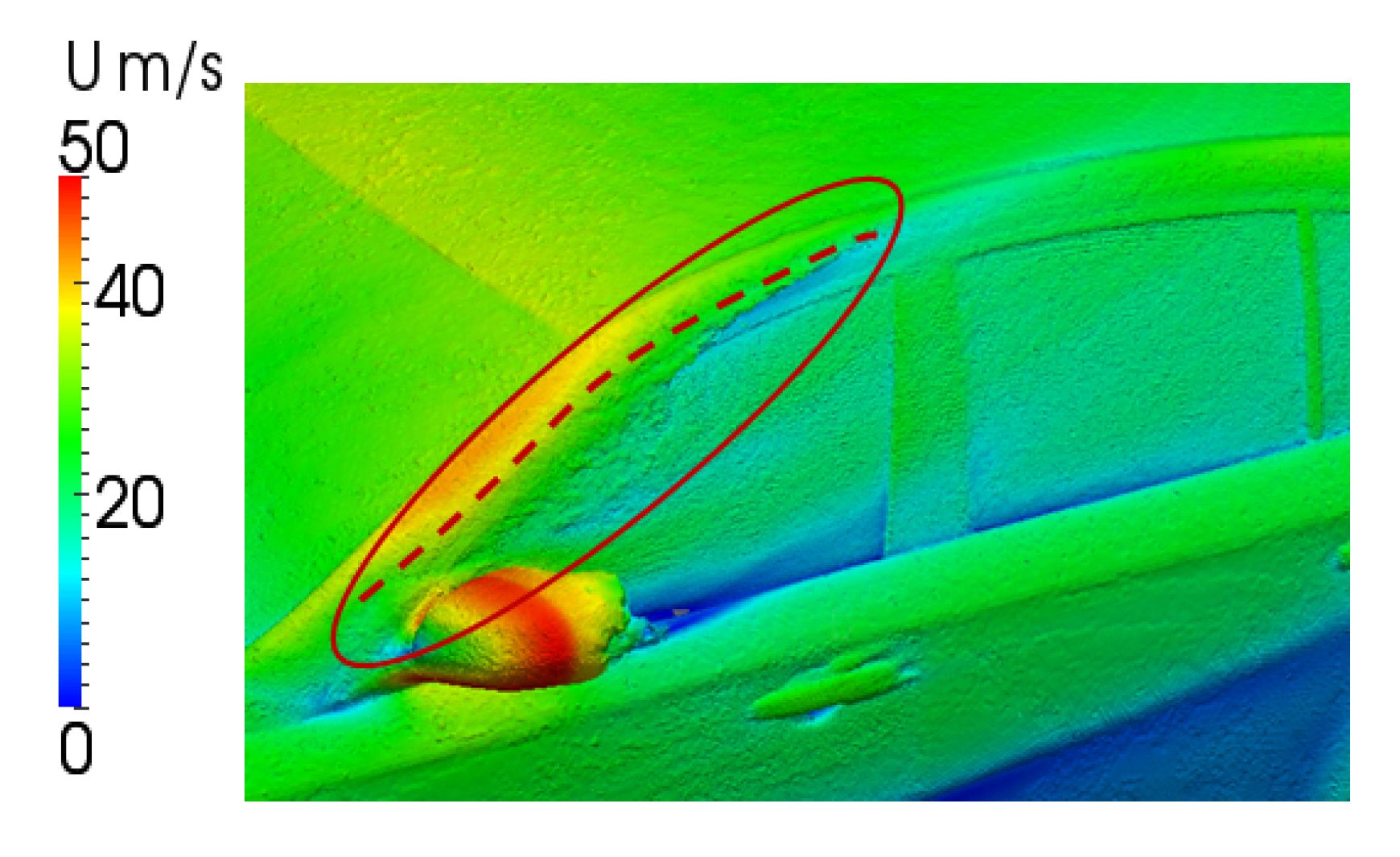

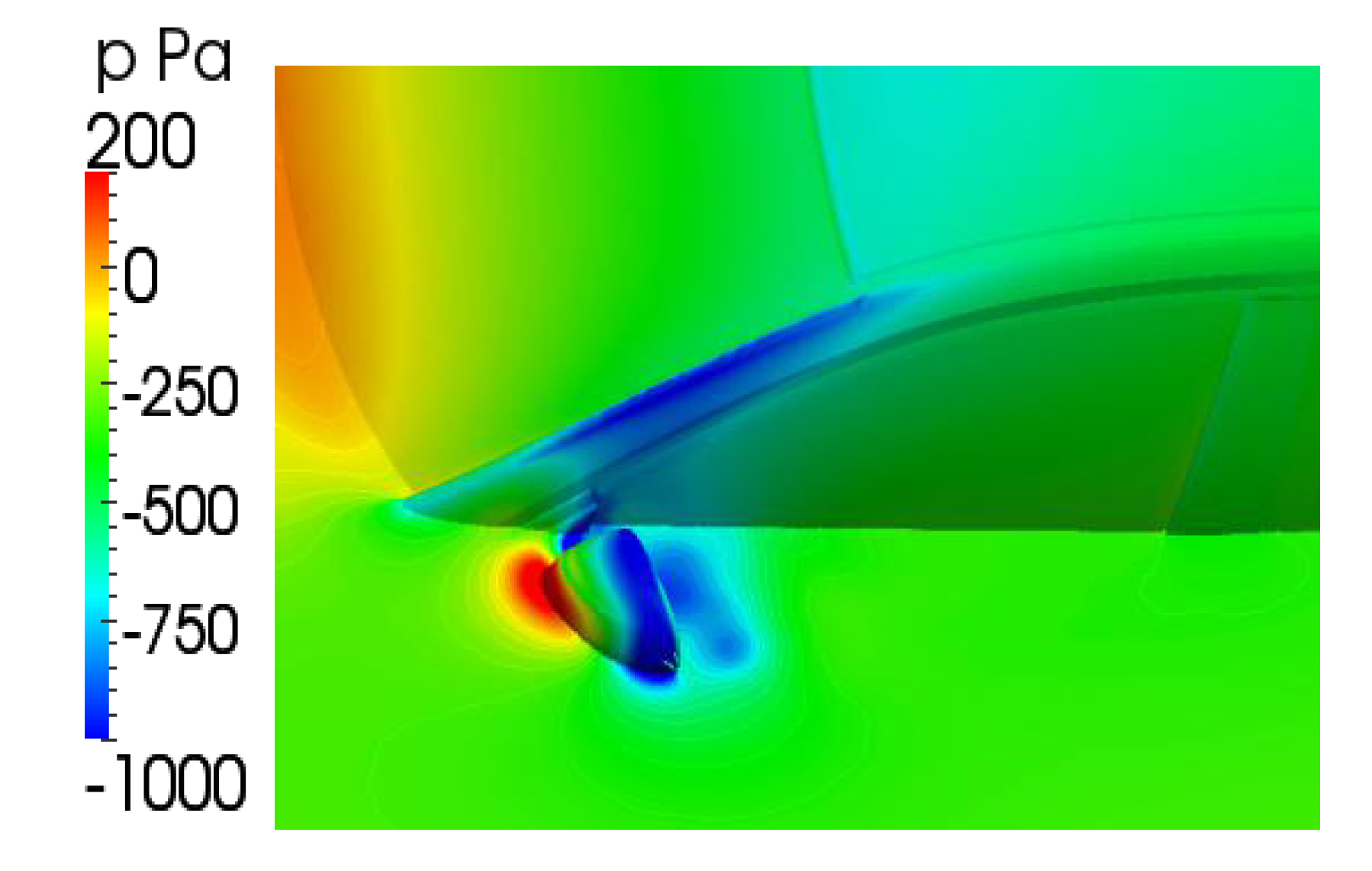
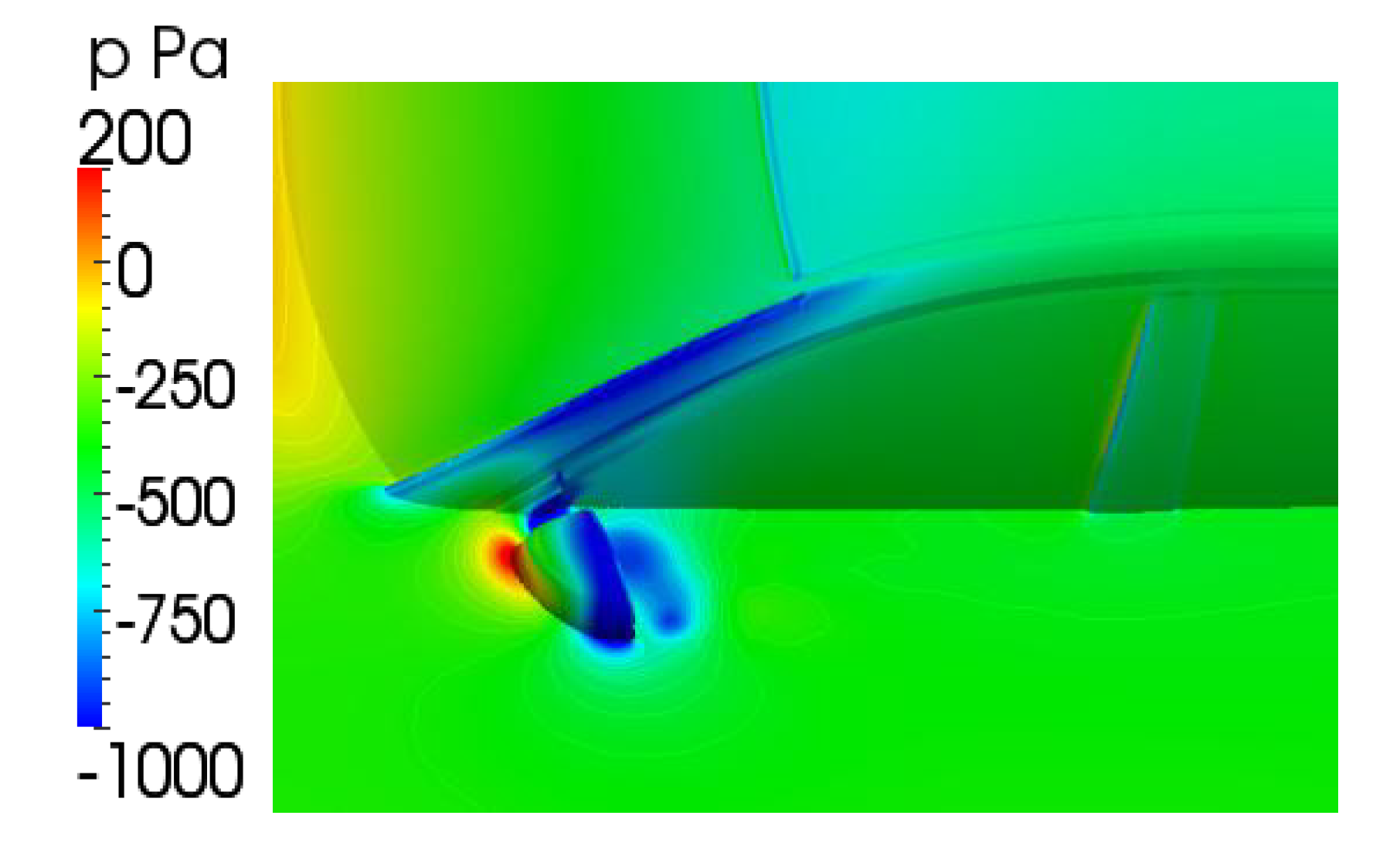
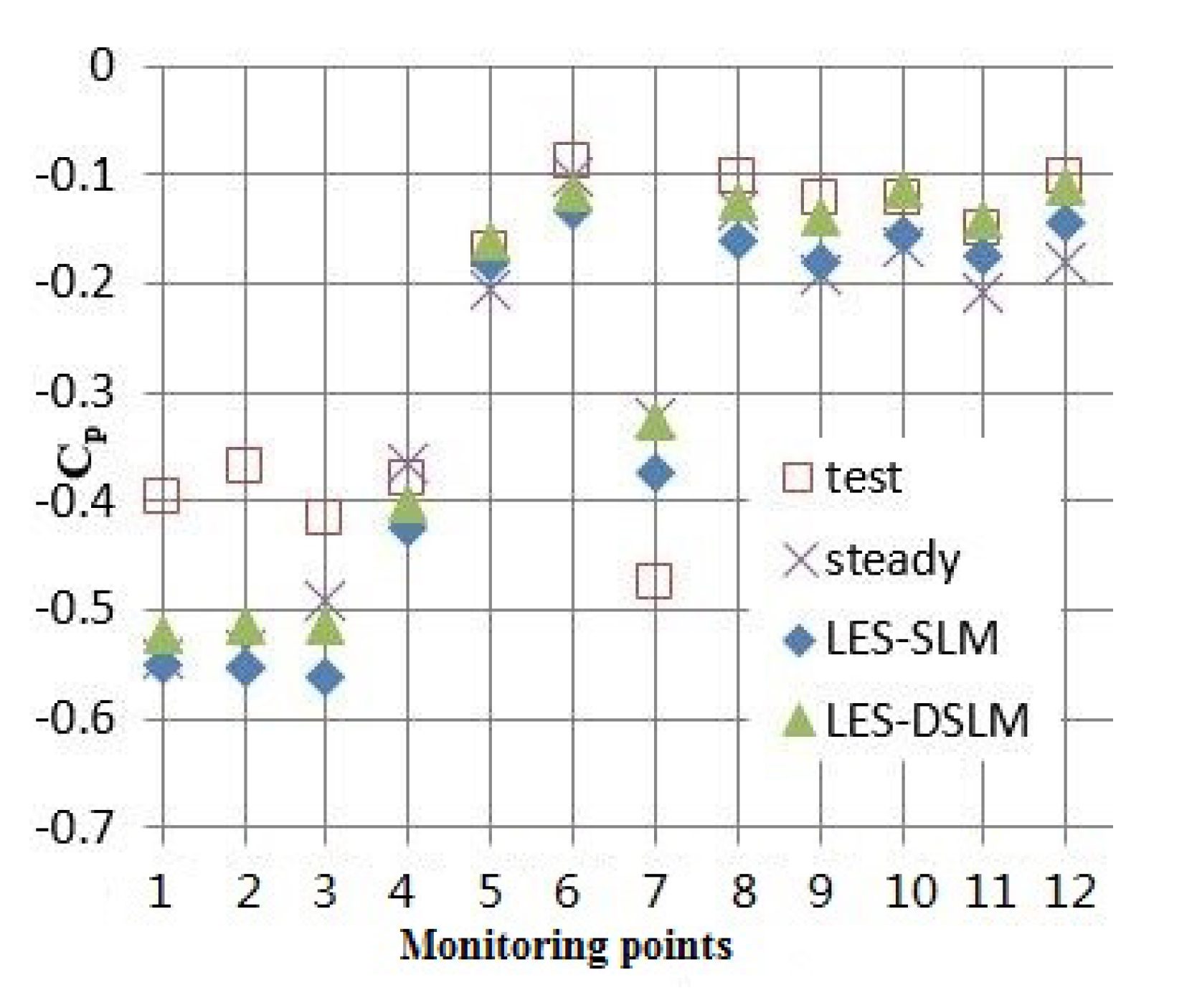
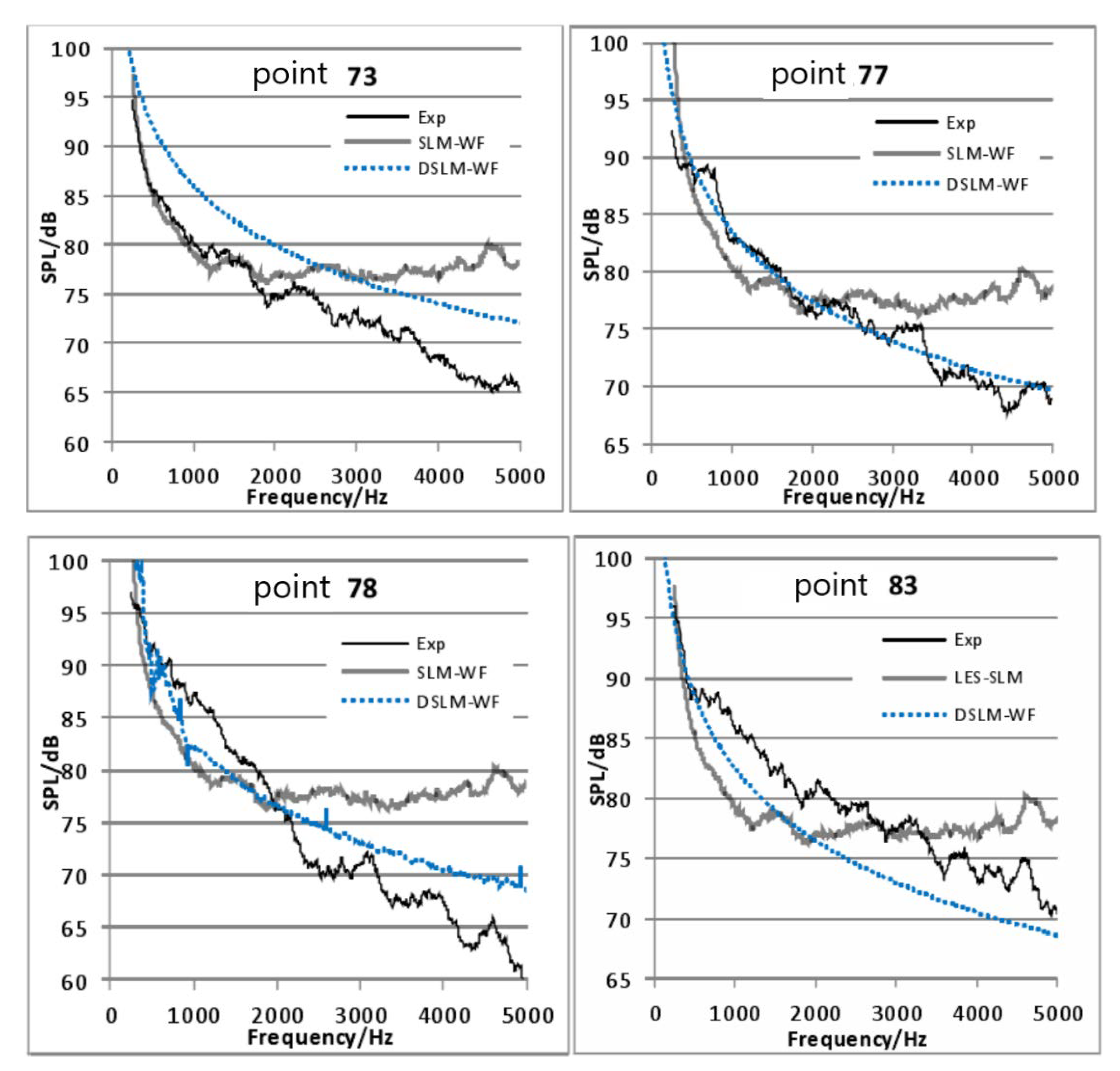
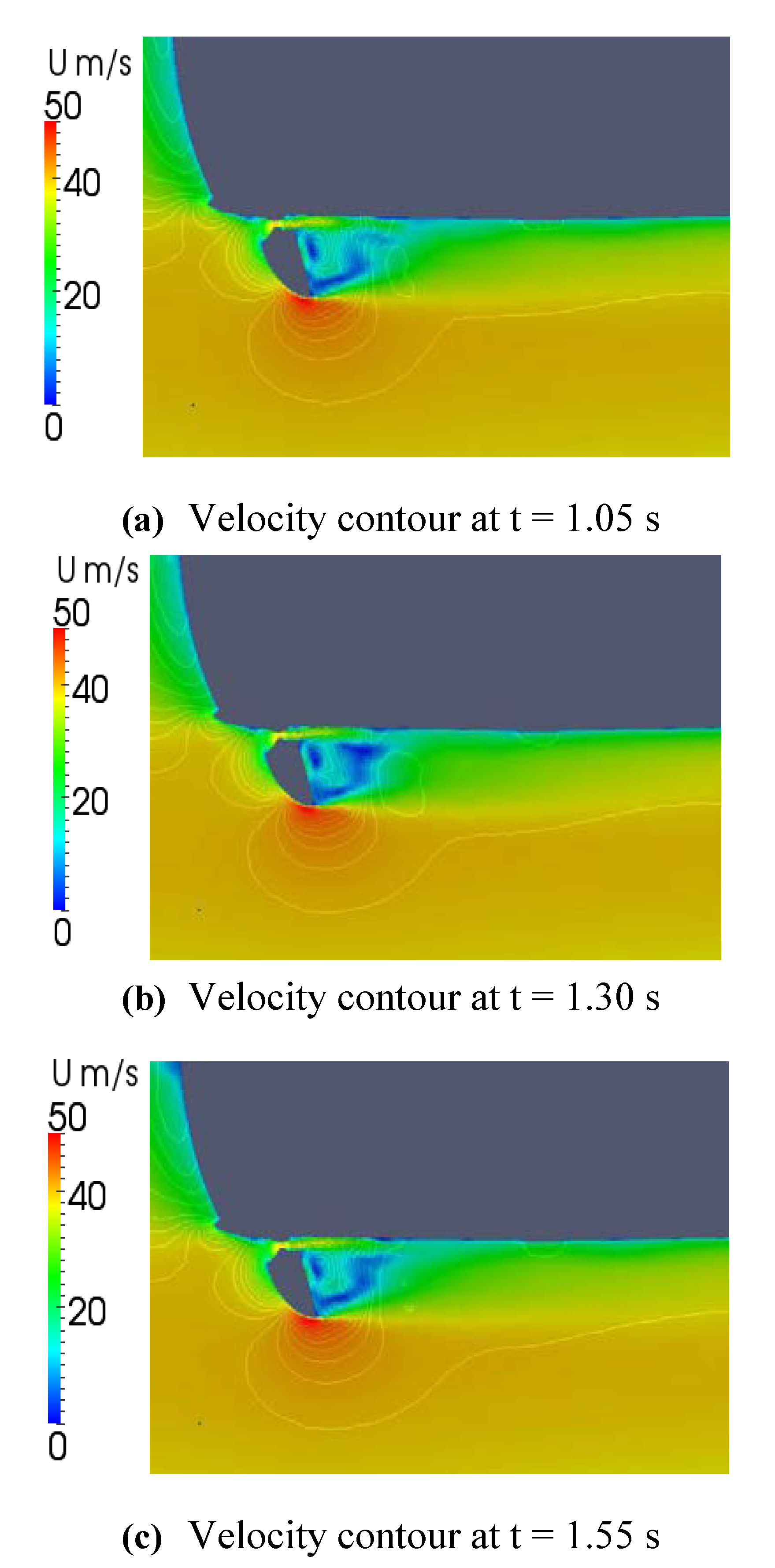
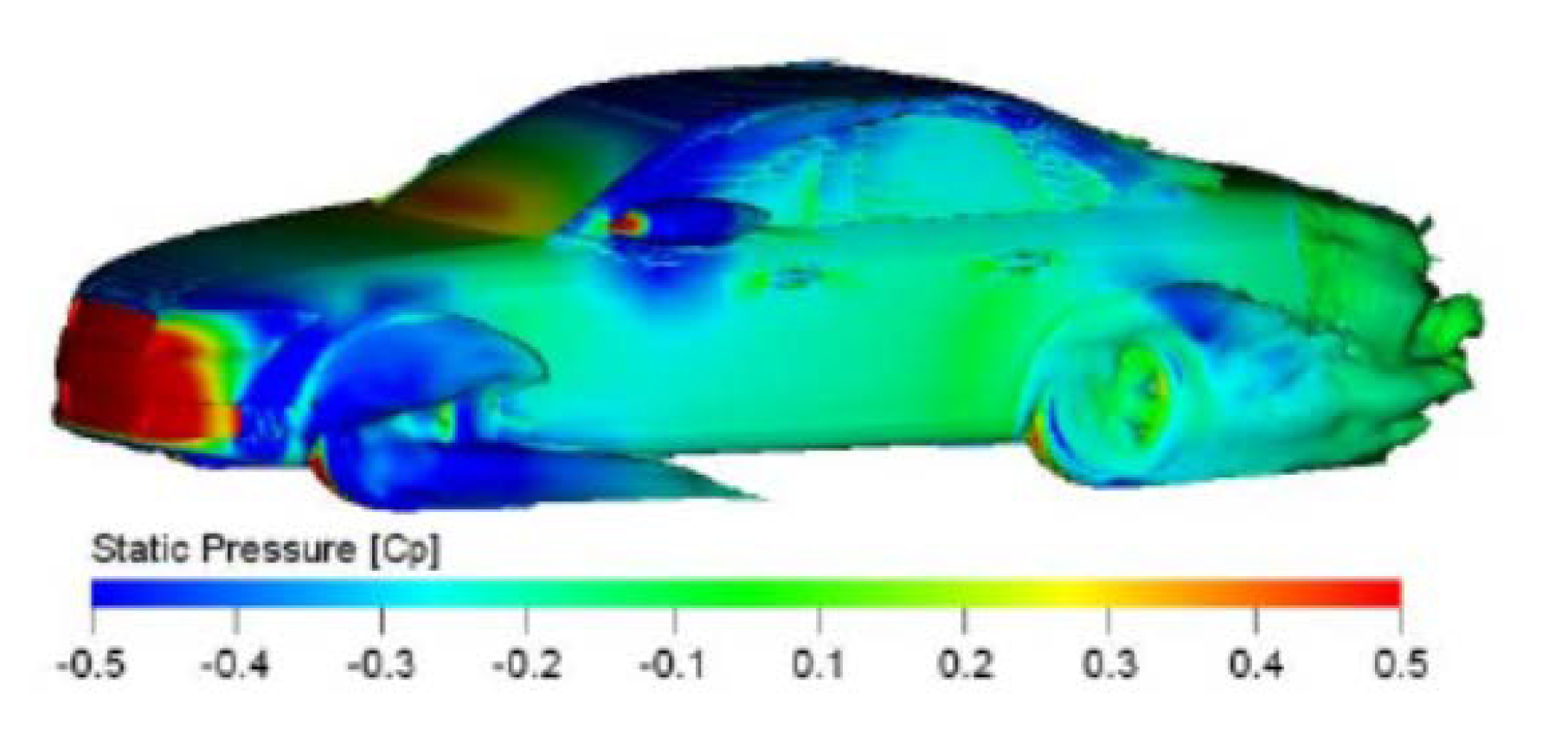

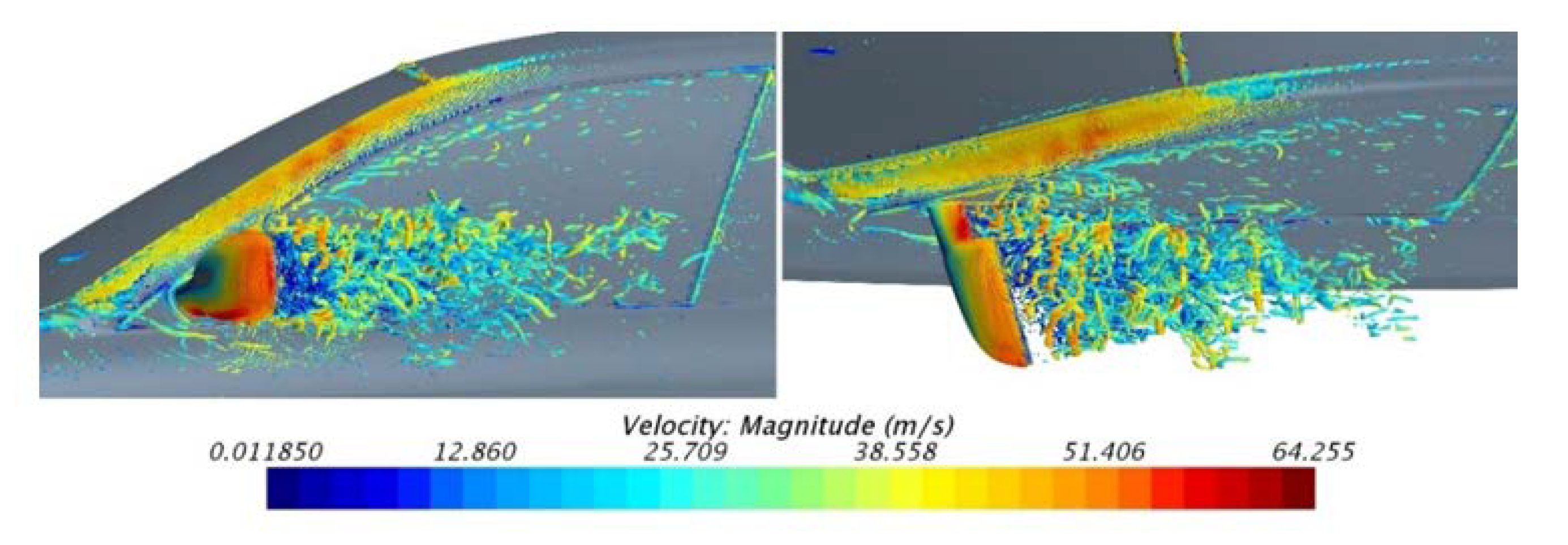
| Names of Mesh | Size |
|---|---|
| Surface mesh of rear mirror (mm) | 1.5~3 |
| Surface mesh of vehicle body (mm) | 5~20 |
| The height of first boundary layer (mm) | 0.2 |
| Boundary layer number | 3 |
| Y+ | 5~20 |
| Total number of mesh | 1.5 × 107 |
| Names of Boundary | Types of Boundary | Specific Parameters |
|---|---|---|
| Inlet | Inlet to the velocity | 6.44 m/s; Hydraulic diameter: 6.66 m |
| Outlet | Pressure outlet | Standard atmospheric pressure Hydraulic diameter: 4.4 m |
| Front end of the test section | Pressure inlet | Standard atmospheric pressure |
| Left end of the test section | Pressure inlet | Standard atmospheric pressure |
| Other wall | Fixed wall | |
| Body surface | Fixed wall |
| Parameters | Settings |
|---|---|
| Solver | PisoFoam |
| Time discretization scheme | Euler Implicit |
| Spatial discretization scheme | Second order upwind scheme |
| Grad schemes (P, U) | Gauss Linear |
| Div schemes (phi, U, k) | Bounded Gauss Upwind |
© 2020 by the authors. Licensee MDPI, Basel, Switzerland. This article is an open access article distributed under the terms and conditions of the Creative Commons Attribution (CC BY) license (http://creativecommons.org/licenses/by/4.0/).
Share and Cite
Hu, X.; Guo, P.; Wang, Z.; Wang, J.; Wang, M.; Zhu, J.; Wu, D. Calculation of External Vehicle Aerodynamic Noise Based on LES Subgrid Model. Energies 2020, 13, 1822. https://doi.org/10.3390/en13071822
Hu X, Guo P, Wang Z, Wang J, Wang M, Zhu J, Wu D. Calculation of External Vehicle Aerodynamic Noise Based on LES Subgrid Model. Energies. 2020; 13(7):1822. https://doi.org/10.3390/en13071822
Chicago/Turabian StyleHu, Xingjun, Peng Guo, Zewei Wang, Jingyu Wang, Mo Wang, Jia Zhu, and Dejiu Wu. 2020. "Calculation of External Vehicle Aerodynamic Noise Based on LES Subgrid Model" Energies 13, no. 7: 1822. https://doi.org/10.3390/en13071822
APA StyleHu, X., Guo, P., Wang, Z., Wang, J., Wang, M., Zhu, J., & Wu, D. (2020). Calculation of External Vehicle Aerodynamic Noise Based on LES Subgrid Model. Energies, 13(7), 1822. https://doi.org/10.3390/en13071822





